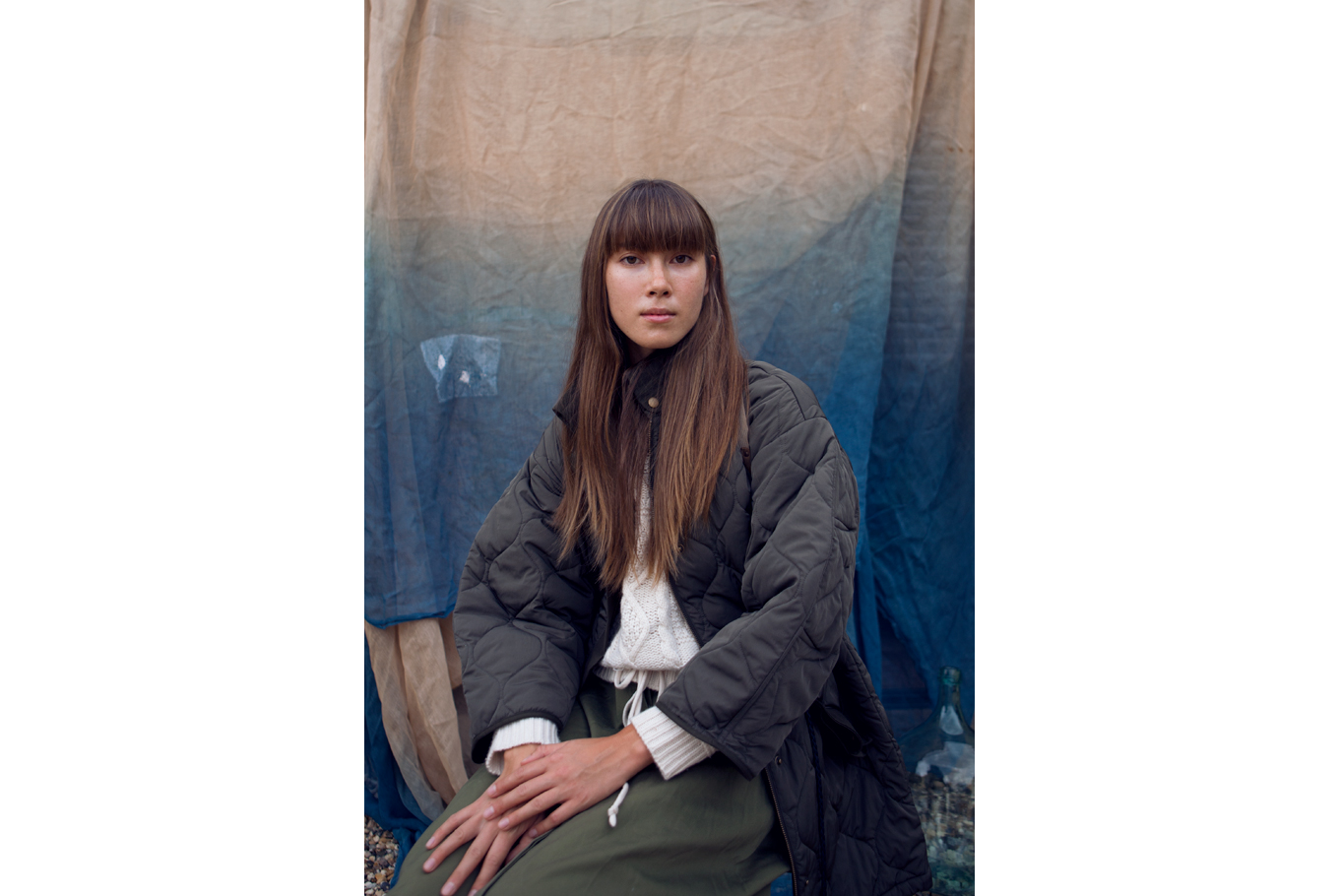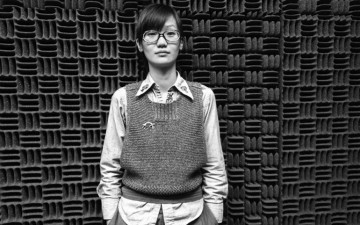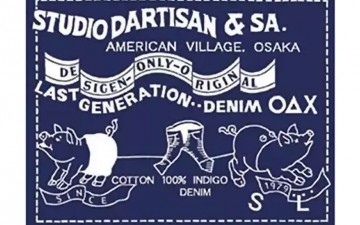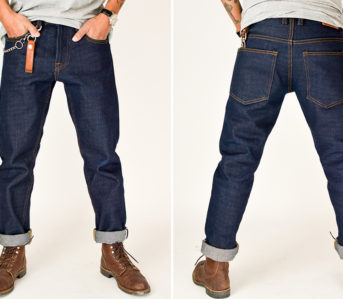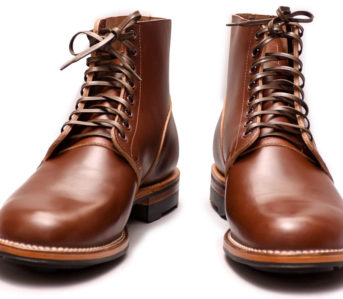In an age of mass production and exuberant consumerism, we all know it’s rare to find a brand whose commitment to transparency, high-quality production and concept development are so considered, that it feels like the brand is simply an organic extension of the creator themselves. Something which is inherently natural and a true reflection of their lifestyle. So much so that when you engage with the brand or commit to purchasing its product, you feel like you are a part of that lifestyle, part of an exciting world – a story which is still very much developing and shows no signs of slowing down.
This is undoubtedly the case with W’menswear and Lauren Yates. We’ve covered Lauren’s endeavors before and it’s a success story we’ll continue to highlight. With W’menswear SS19 dropping in stores worldwide, we sat down with Lauren after a visit to her Paris showroom during Fashion Week and re-visited her journey to see exactly what it is that inspires her.
Known to many as the creative behind Ponytail Journal, Lauren’s thirst for culture began at a young age, having been born in Hong Kong and then growing up in Australia and Bangkok. Now residing in the French countryside, Lauren travels extensively to mills and factories worldwide, as well as spending her weekends scouring flea markets for concept inspiration. We talked about everything from surfing and fishing to fabrics and brand transparency, so sit back and check out the conversation below.
Welcome to the world of Lauren Yates and W’menswear…
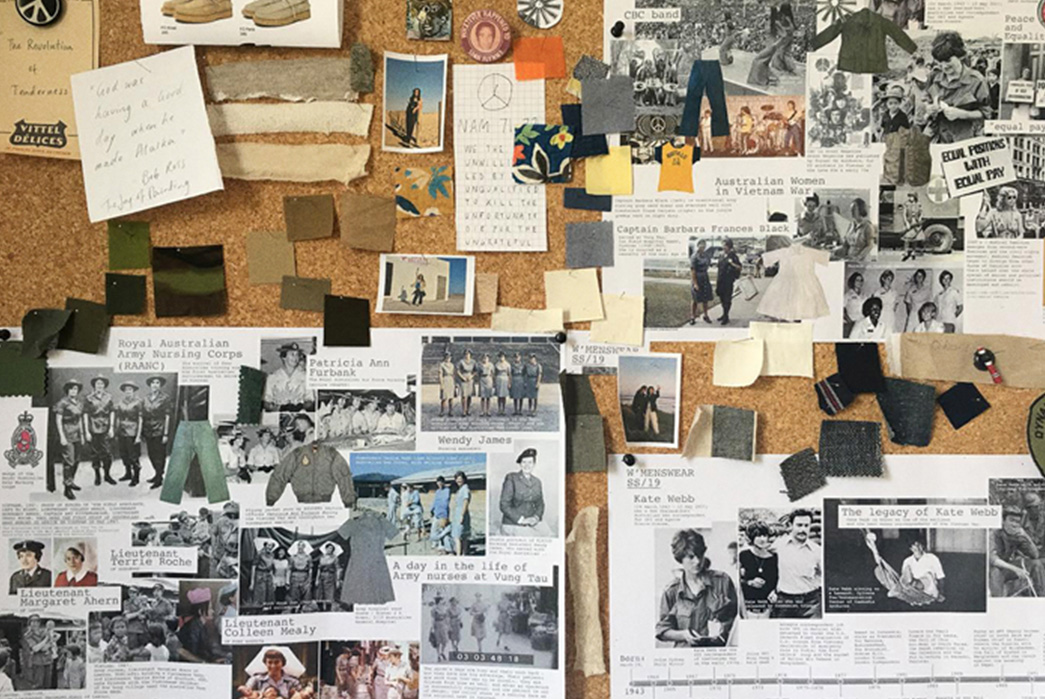
Humble Beginnings
Heddels: Does it seem like a long time ago that you started the brand, back in 2015?
Lauren Yates: Yeah, it seems like I’ve done a lot of stuff since then! When you’re making clothes and making two collections a year, you travel and have to cram a lot in…
H: In terms of your outlook, sensibilities, and exposure to culture, your upbringing must have had a real impact on you.
LY: Totally, it has really influenced who I am. I have picked up things from every place that I’ve lived. My dad is British and I was born in Hong Kong back in the 1980s; it was a very up-and-coming place to be and very hip then. Nigel [Cabourn] tells me he was producing in Hong Kong a lot at that time, it was really interesting. I then spent a lot of my early childhood in Thailand as my mum is Thai and then I moved to Australia with my family at around 10 years old. That really had a huge impact on me in terms of the lifestyle in Australia; I was a surf-life-saver, it was where learned to fish, surf and a lot of other things that I really loved. Australia is like a paradise at the end of the earth for me. France feels like home for me now, but I feel a strong connection with all the places I’ve lived.
H: I’ve read that the ocean is a big part of your life and you get a lot of inspiration through surfing and fishing, etc. It sounds like you’ve always been active in the outdoors and immersed yourself in your environment. Tell us more about that.
LY: For sure. The environment has definitely influenced who I am, what I do and what I love. The brand is everything that I love, it’s my weird baby, haha. I feel like the brand is unique because there is only one of me! And I tend not to be trend-based or take from whatever is ‘happening’ right now; a lot of design comes from vintage pieces I’m wearing. When people get to know the brand and then they meet me, they see the connection.
H: What is your educational background?
LY: I went to Fine Art school; my background is in art history and my major was in visual media (photography). But even though that was my major, I ended up going into more sculpture and installation pieces. I was really into sensory art and just experiencing art as it is, not breaking it apart or over-analyzing it. At art school, you don’t really learn too much, but you do learn how to think about things and then turn them into experiences.
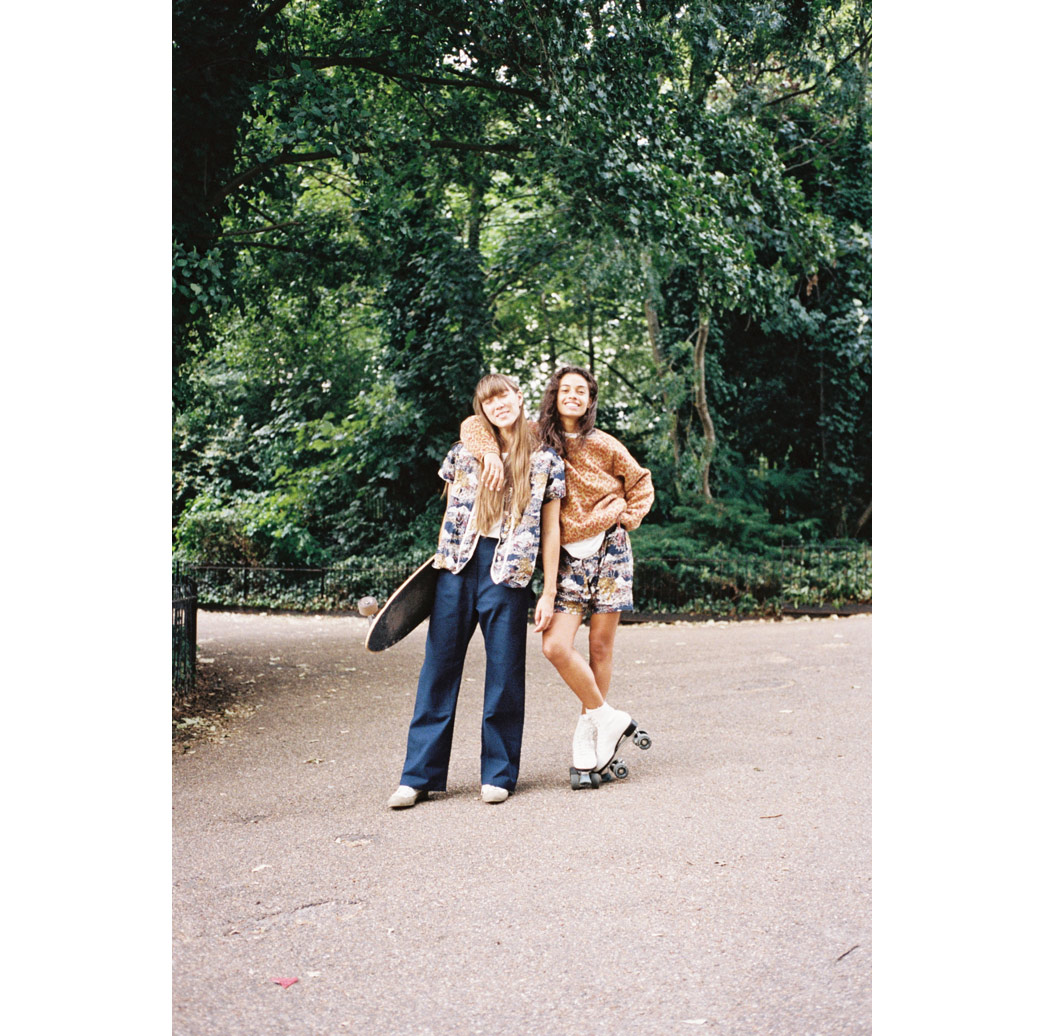
The birth of Ponytail Journal
H: Fast-forward to 2013 when you started Ponytail Journal, where were you at the time?
LY: I was living in Singapore for 6 months when I started thinking about it, but I launched it when I was living in Thailand. When I finished art school, I did some ‘odd jobs’—commercial fashion photography—and then I slid into modeling, which became more frequent until I was doing it full time. I was traveling, had built up a good network and it was a great opportunity, but it wasn’t enough mental stimuli for me. So I decided to start a blog—more as a mental exercise—but it quickly turned into something more than that.
H: Did you ever imagine that Ponytail Journal would develop into what it became?
LY: I just went with the flow and it kinda took off. I think it was at the right time and there was nothing quite like it. I was able to make some money from it and I expanded my network through it too.
H: From all those different experiences, you’ve been able to build a broad network of contacts which all fit together?
LY: It was a very long drawn out process, haha, of figuring out who I was, what I liked and where my community was. I was quite happy building the blog and turning it into a great space, but then I met Nige (Cabourn) around 2014 and we became great friends. He was very encouraging about me making pieces and selling them through my blog. Ben Viapiana was also living in Bangkok at the time and he asked if I wanted to do something, like launch a small collection. He was interested in doing that with me and it turned out to be a great match.
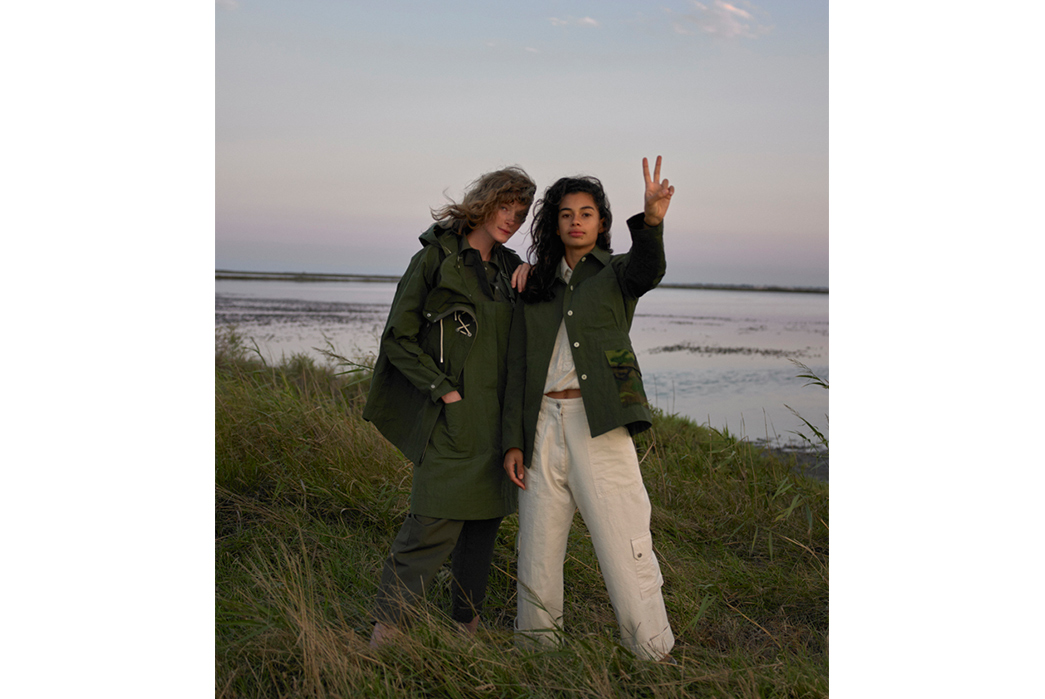
‘Hard-hitting garments for hard-hitting women’
H: Focusing on the ethos behind the brand, ‘Hard Hitting Garments for Hard Hitting Women’, and its historical narrative—was that something you had always been interested in or did that come when you started the brand?
LY: I think I come from a family of pretty strong women, so it’s really embedded into me. My sister has her own business too and we were always encouraged to be entrepreneurial, to do your own thing. Key women in history have always resonated with me, even during art school I did projects which looked at that area of history. Human beings always tend to align with like-minded individuals and these women seemed like my kind of people or that I’d be pals with!
I’m always really interested to see who is buying the product and even though it’s all kinds of women, they’re all really moved by the brand’s focus in this way. They’re able to identify with who or what I’ve identified with, even though we might not dress the same or have the same style. Some people buy it because conceptually it resonates with them.
H: Did it surprise you that the brand appeals to so many different people in that respect?
LY: Totally. It still surprises me! I always thought that because my product is so niche, it would only resonate with a narrow group of women, but the more I find that all kinds of women are into this. It’s pretty cool.
H: In terms of the brands aesthetic and its ties to military, workwear and utilitarian garments, what was the appeal there for you? Were you always interested in those concepts?
LY: It’s a reflection of what I’m interested in and my passions, like fishing. I’d always been into more ‘boy-ish’ activities growing up, like skateboarding or playing football. And the more I got involved in those activities, I’d find an old Barbour jacket to use as my fishing jacket for example. It was just the right gear and it happened to be men’s clothing a lot of the time.
H: When we sat down with you before, you said you wanted to bring something to the table that didn’t exist already and find a gap in the market. However, we’d argue the brand is much more than simply filling a gap in the market, it’s such a strong concept and the brand’s development seems so organic, harmonious and intentional.
LY: I think the key is authenticity; for example, there is a very heavy left-wing feminist swing happening right now in the US, the UK and all over the world. A lot of big brands are playing on this in a very inauthentic way by seeing it as a ‘trend’ and hopping on the band-wagon. But I hope people can see how authentic and how passionate about it I am, and get into it. It’s interesting the way in which we apply the word authenticity to clothes; of course, it applies to manufacturing, but it can also apply to ideas. Nowadays, I think authentic ideas are very precious.
H: We’re at an interesting time in fashion where being authentic has become much more than ‘Made in the USA’ or ‘Made in Japan’. It’s not only about where a garment is made but how it’s made and the transparency of the brand.
LY: I think people need to talk about that more, this is what happened in the food industry in the late ’90s when people started questioning what their food was made of and where it came from. That really changed how we think as a whole culture, it was so important. We need to talk about that more in the clothing industry and just because a garment says where it’s made, it’s not really telling you much. But I feel like we’re on the tip of a revolution.
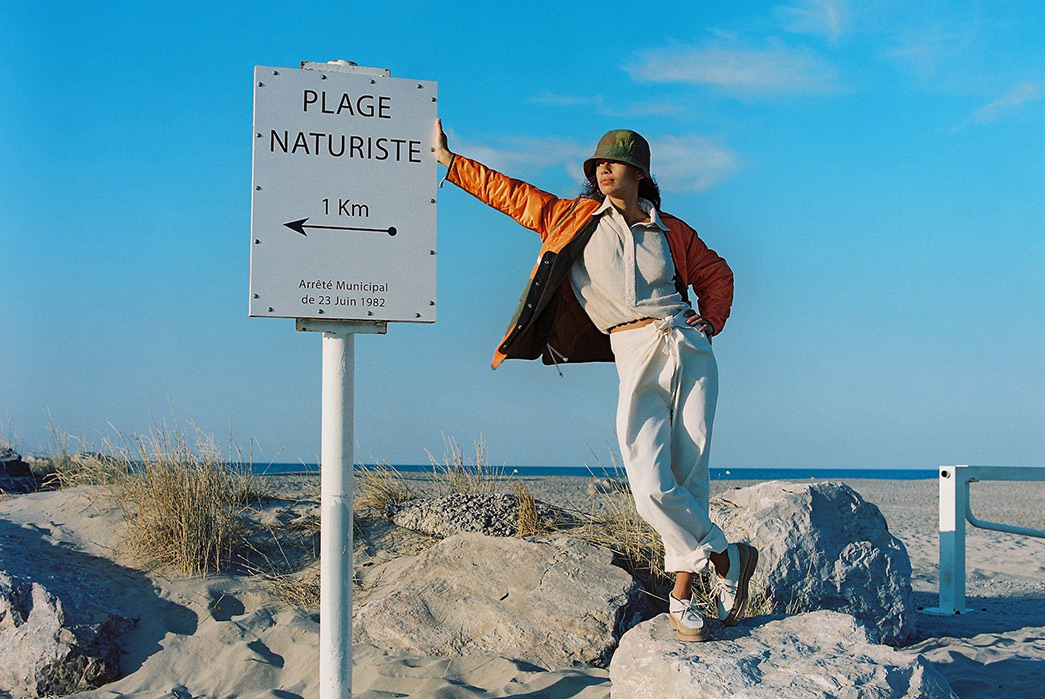
Manufacturing and the making of a concept
H: In terms of manufacturing for W’menswear, talk us through how important it is for you to be connected with your suppliers and involved in the manufacturing process?
LY: I have a very personal relationship with all my suppliers as they’re all small businesses. All the fabrics are predominantly from small mills in Japan, Scotland, and Italy. I’m really interested in where the technology is going and what we can do with fabrics at the moment. I’m trying to mix past and future together!
A lot of the fabrics we use are small batch fabrics, with around 70% of the collection being made from Japanese fabrics. We will import the fabrics to the manufacturers and the main factory I use is in Vietnam, which is a very small and part of a dying breed of factories, as the seamstresses are super highly skilled. Many big brands manufacturing in Vietnam are producing en-masse and a lot of workers are being replaced by robots and machinery.
Usually, I’ll do at least one special fabric each season that is produced for me, but the rest are made to order but will be produced by a specific fabric mill. My fabrics and manufacturing are very site-specific, like my sheepskin jackets are made in Scotland for example.
H: What have been some of your favorite fabrics to work with over the last couple of years?
LY: In AW18 we did a special tightly woven nylon that was dyed with a special dye technique to make it look like marble paper meets camouflage. They had to dye each meter of fabric and every single inch of the fabric was unique. It was quite expensive to do but it was a very unique idea. We did some in desert and jungle camo, it was pretty cool! For SS19 we did a parachute dress which was an exact replica of the Vietnam War era parachute in ripstop. The dress is a bright ‘safety orange’ and is completely made from that fabric.
A ‘River Cottage collab’
H: Looking at some of the concepts behind the collections, there is a huge amount of detail and content that goes into them, often from a small pocket of history that you have researched. Tell us more about that process?
LY: One of the cool things about being in fashion is that you have a chance to influence culture. So if I can make someone curious about a specific period of time that makes them look into it more and more, that’s pretty cool. Sometimes it’s hard to describe how it happens, but I’m 24/7 tuned into picking up things and every weekend I’m going to flea markets. They’re full of treasure from the past and I might just pick up a book or object and store that for later. That same subject might come up on TV a few weeks later and I’ll remember that subject again. I guess it just comes from looking at a lot of old things and getting tuned in to what you’re picking. You just have a sense of what to look at!
H: You’ve done some great collaborations with different brands from Yuketen to Papa Nui and Bags in Progress. Tell us about how those collaborative projects work?
LY: So far they’ve been like-minded friends in the industry who have a mutual respect for one other. It’s very organic. For now, it’s cool to make cool things with friends in the industry! The first collaboration I did was with this couple called Lynn and Tony, who are well-known object designers from Australia. They were actually mentors of mine throughout university and they hand-make all of their pieces in their Sydney studio. We decided to take vintage denim and strip it down to small pieces and they would hand crochet them into these nautical looking jewelry pieces.
H: Are there any particular brands or items you’d like to collaborate on in future?
LY: That’s a tough question…I’d like to collaborate with Hugh Fearnley Whittingstall. He’s been my idol since I was a teenager, he’s cool! He’s influenced a lot of my interests; I got into gardening and fishing because of him. He’ll just put his mind to something and really go for it, with no ego.
So…for SS20 the concept is deep ocean exploration which started during the Cold War, due to the technological developments of the time. Let’s say for the launch, I’d like to do a dinner using only sustainable seafood, in order to spread awareness about over-fishing and the environmental impact of this area. A River Cottage collab!
(Hugh, if you’re reading this, slide into the DMs…)
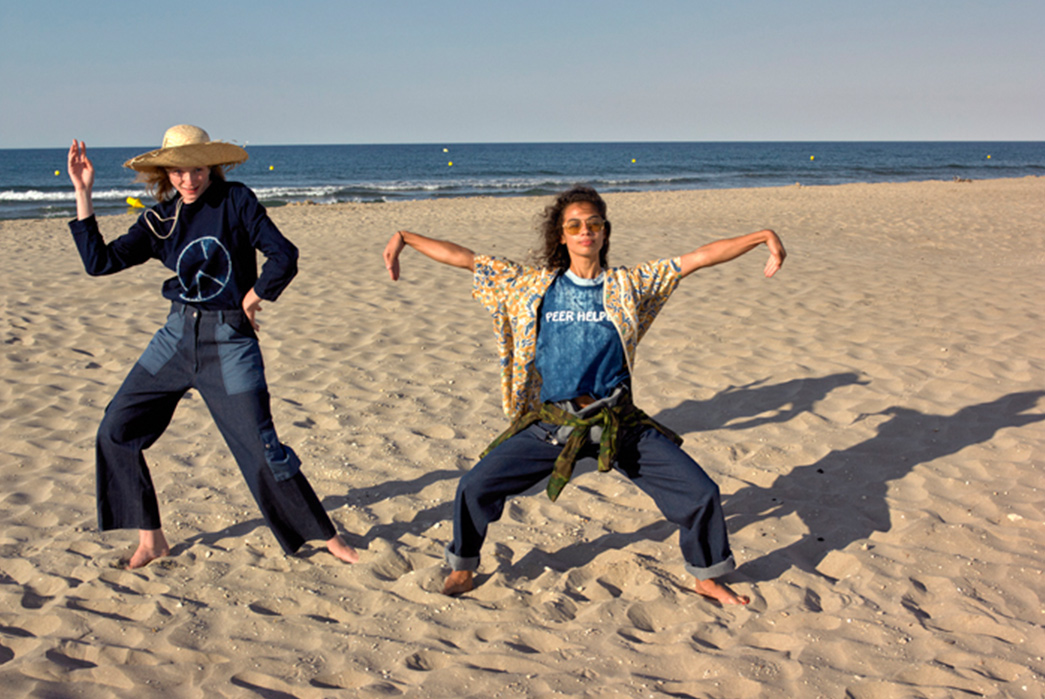
Store selection & next steps
H: You’re about to embark upon a trip for the production of AW19 garments and to visit stores carrying the brand which are about to launch SS19. How many stores stock the brand and how do you select them?
LY: So far it’s been very organic, the stores have approached me and we’ve had a lot of traffic from the trade show circuit. I do decline some stores if I don’t feel it’s the right fit. For SS19, there are 23 stores which are stocking the product. For AW19 it will be closer to 30-something. I really appreciate the very personal and face-to-face relationship I have with all the stores I work with. It feels like a proper family and not too business like!
H: Anything else you’d like to share with us in terms of next steps and what the future holds for the brand?
LY: We’re going to keep diving into more interesting points of history and doing more events as the brand grows bigger. I think the brand is really taking roots now with stores investing more and more, which is really cool!
Follow Lauren and W’menswear on Instagram, check out the Ponytail Journal website and shop the brand at selected retailers including Scout Classic and Heffernan and Haire.
